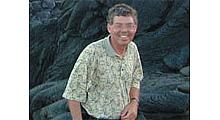FCC Updates TVStudy Software

Doug Lung
The FCC Office of Engineering and Technology’s latest version of its TVStudy software now includes an option to calculate distances to DTS stations as the shortest distance to any individual transmitter. TVStudy is the software the FCC proposes using to determine how much spectrum will be available for the Incentive Auction and how TV stations not giving up their channel will be protected.
When the new option is selected, the station-to-cell check is applied to each individual transmitter for a station that may interfere at a given study point, and undesired signals from individual transmitters that are inside the culling distance are included in the sum for the total undesired signal level and signals from transmitters outside the culling distance are excluded. The existing (and still default) method calculates distances using just the DTS reference point coordinates regardless of the actual transmitter locations. Signals from all transmitters are summed, regardless of distance, potentially using signals from transmitters outside the culling distance. Under the default method, if the DTS reference point is outside the culling distance, no undesired signal is checked, even if some of the transmitters are inside the culling distance.
The new version (v1.2.9) fixes a bug that did not convert DTS transmitter coordinates from NAD27 to NAD83. The coordinates for the DTS reference point and all other non-DTS records were already being converted.
Some default values were changed. “Mirror generic patterns” was changed from “Yes” to “No”. The Longley-Rice error-handling method default was changed from “Disregard” to “Assume Service”. The “Rule extra distance” default was changed from 129 km to 160 km.
The update addresses a potential issue where records with an AMSL height representing an above-ground height less than the minimum set by study parameters were changed so that the above-ground height is at the minimum. These changes were saved back to the database record so they don't have to be recomputed on future runs. In v1.2.8 and earlier, any changes to study parameters would trigger a repeat calculation of the above-ground height which could cause it to change slightly between the first and second calculations. Results are now consistent.
The Terrain Database Test and Verification Utility was released to test and verify the various terrain databases used by TVStudy. Issues with the terrain database could cause differences between studies if a terrain database was not accessible by TVStudy due to permissions problems.
New pair-study options were added to select output files from the baseline study, similar to a normal study run. Report, CSV and map files can all be requested.
The study run dialog has a new menu that can be used to limit the amount of memory the engine process is allowed to use. This can be useful if running several simultaneous study runs.
For a complete list of changes, refer to the TVStudy Upgrade Guide and Change Log. The latest software is available on the FCC TVStudy Software – OET Bulletin No. 69 web page. Note that the software manual is now included in the Mac and Linux (64-bit) gzipped tar archives.
Get the TV Tech Newsletter
The professional video industry's #1 source for news, trends and product and tech information. Sign up below.
Doug Lung is one of America's foremost authorities on broadcast RF technology. As vice president of Broadcast Technology for NBCUniversal Local, H. Douglas Lung leads NBC and Telemundo-owned stations’ RF and transmission affairs, including microwave, radars, satellite uplinks, and FCC technical filings. Beginning his career in 1976 at KSCI in Los Angeles, Lung has nearly 50 years of experience in broadcast television engineering. Beginning in 1985, he led the engineering department for what was to become the Telemundo network and station group, assisting in the design, construction and installation of the company’s broadcast and cable facilities. Other projects include work on the launch of Hawaii’s first UHF TV station, the rollout and testing of the ATSC mobile-handheld standard, and software development related to the incentive auction TV spectrum repack.
A longtime columnist for TV Technology, Doug is also a regular contributor to IEEE Broadcast Technology. He is the recipient of the 2023 NAB Television Engineering Award. He also received a Tech Leadership Award from TV Tech publisher Future plc in 2021 and is a member of the IEEE Broadcast Technology Society and the Society of Broadcast Engineers.

